Ta Prohm, Ta Keo and Preah Khan temples
Ta Prohm
Temple trekking day two, another early start. The hotel brought our orders at 7am, already learning what we like. It was an overcast morning, and we were glad not to have woken at 4am for the famed Angkor Wat sunrise.
To Ta Prohm, by tuk tuk, to the temple I was most anticipating. It lies to the east of Angkor park. Ta Prohm is the temple taken back by nature, (also known as the Tomb Raider temple, I’ll let you guess why). Here roots, branches and trunks intertwine with rocks, foundations and temple carvings. A temple where nature has run its course for over half a millennia.
As one of the first tuk-tuks to arrive, the kids selling items were energetic, and eager to make an early sell. They pounced on us, seven or eight, all at once; postcards, musical instruments (“one doll-ar morning discount”), guidebooks, and more. None of it we wanted, and we walked briskly away, eventually they stopped following us.
The temple is reached via a long muddy path. The air was misty and eerie, the path empty but for a photographer and tripod, returning from his sunrise photo shoot. At the entrance, a shaky temple wall, a small mound and a great tree rising up. Seemingly the middle of nowhere.
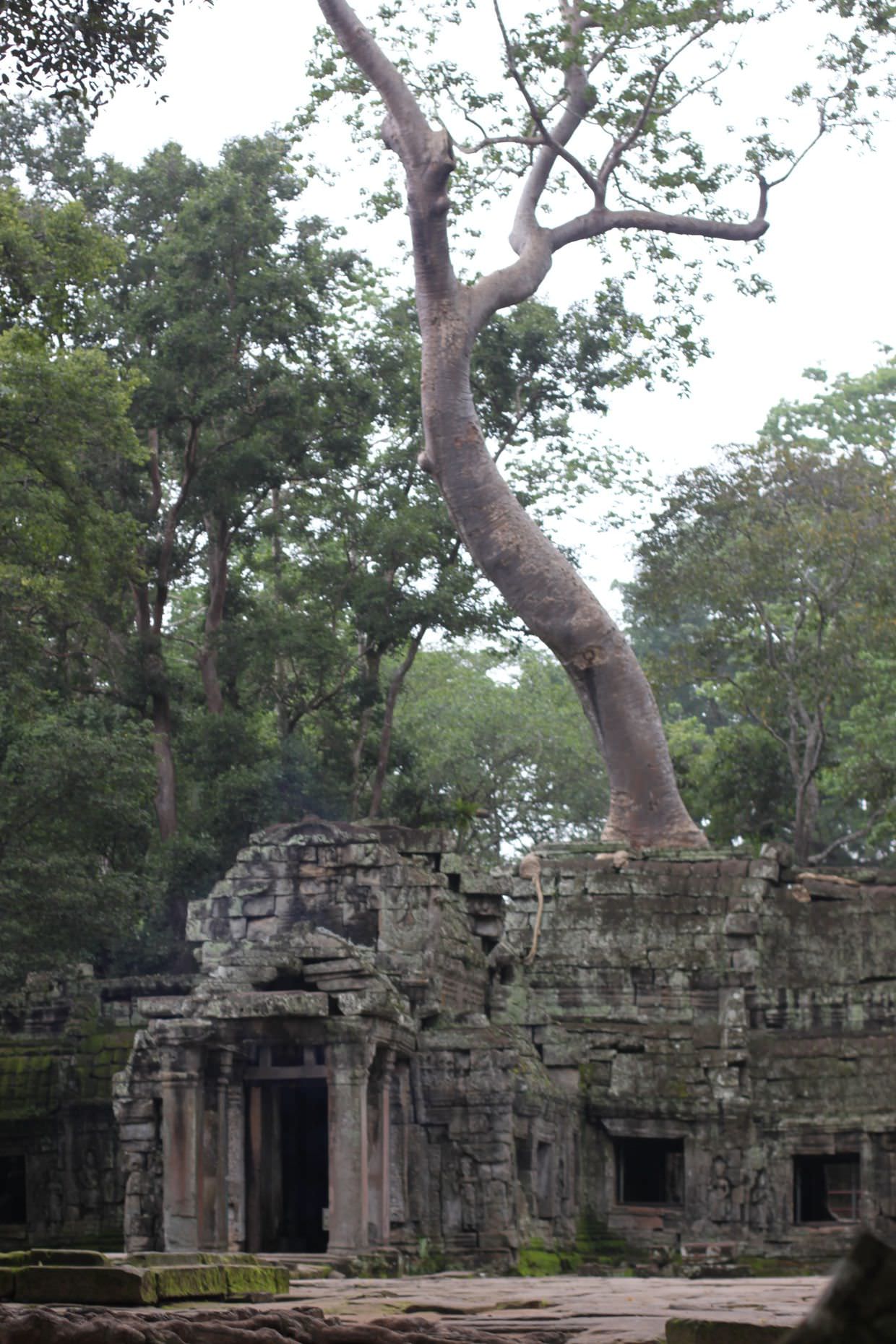
But the mysticism and wonder were quickly dispelled. On entering, into the most picturesque and famous part of the temple, a renovations work crew were having their morning meeting. In yellow hard hats, against a truck and a giant crane, these workmen prepared for their day of restoration. Not the serene jungle setting I had expected, “inconvenience caused is regretted” a sign said. Brand new boardwalks and ropes protect the temple and tree roots from visitors, but also scar whatever photos you might hope to capture.
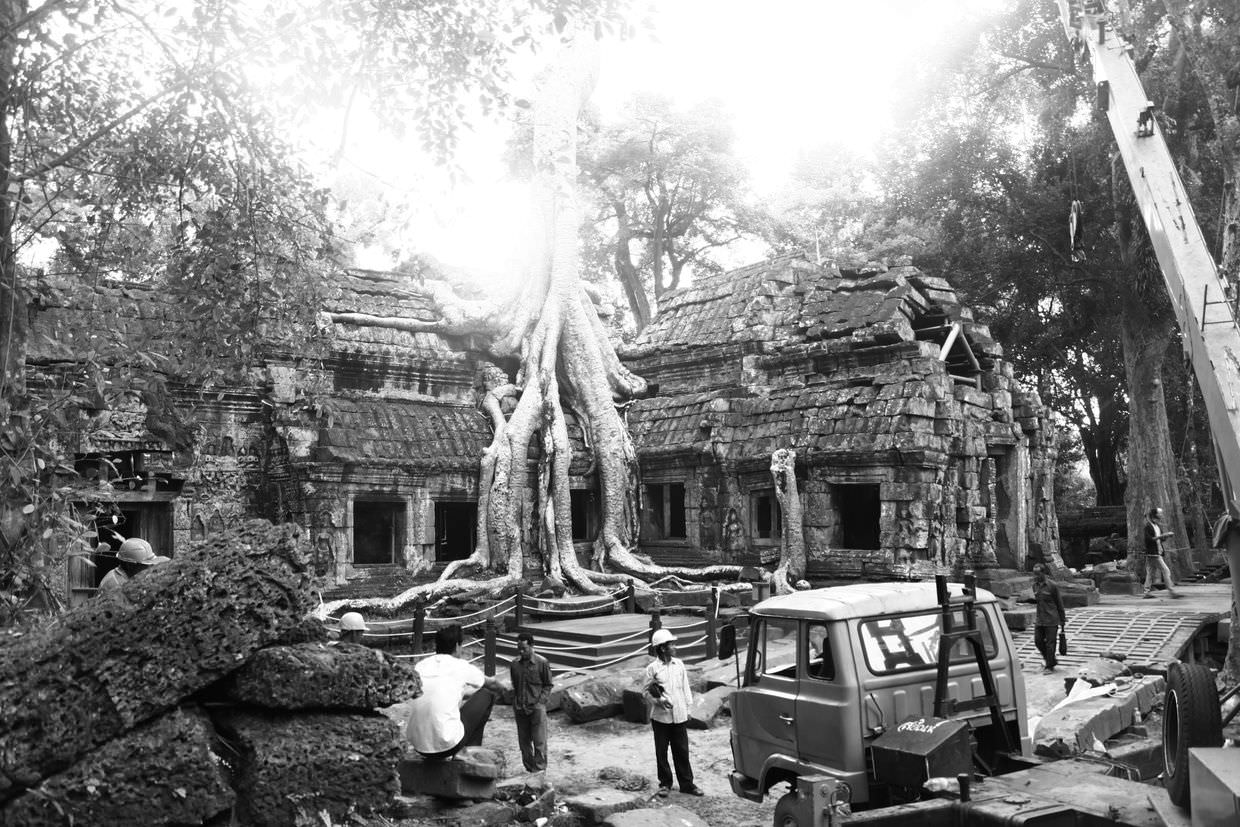
Sam wasn’t feeling great, and she had to wander back up the muddy path to find a “happy room”, as it is called here. Leaving me to explore this place by myself, armed with a digital SLR and a gorilla tripod.
Beyond the opening disappointment the temple is everything I’d expected and hoped for. Through surviving ancient corridors I wandered, discovering eerie, hidden chambers, and ancient rooms filled with rubble. Some passageways are marked as dangerous, whilst others are held up by metal supports. Moss damaged stone and leaves litter the floor. Roots are carving through stone walls, bouldering them over. A delicate balance between nature and temple lies throughout, and it’s stunning.
I wandered around carefree for an hour or so, three laps of this amazing place, finding something new each time. In an empty opening, amongst the roots of an ancient tree, I sat, listening to the birds, the sounds of the jungle, the rustling of the leaves, watching the swaying of the trees. I must’ve stayed here for ten minutes or so, uninterrupted.
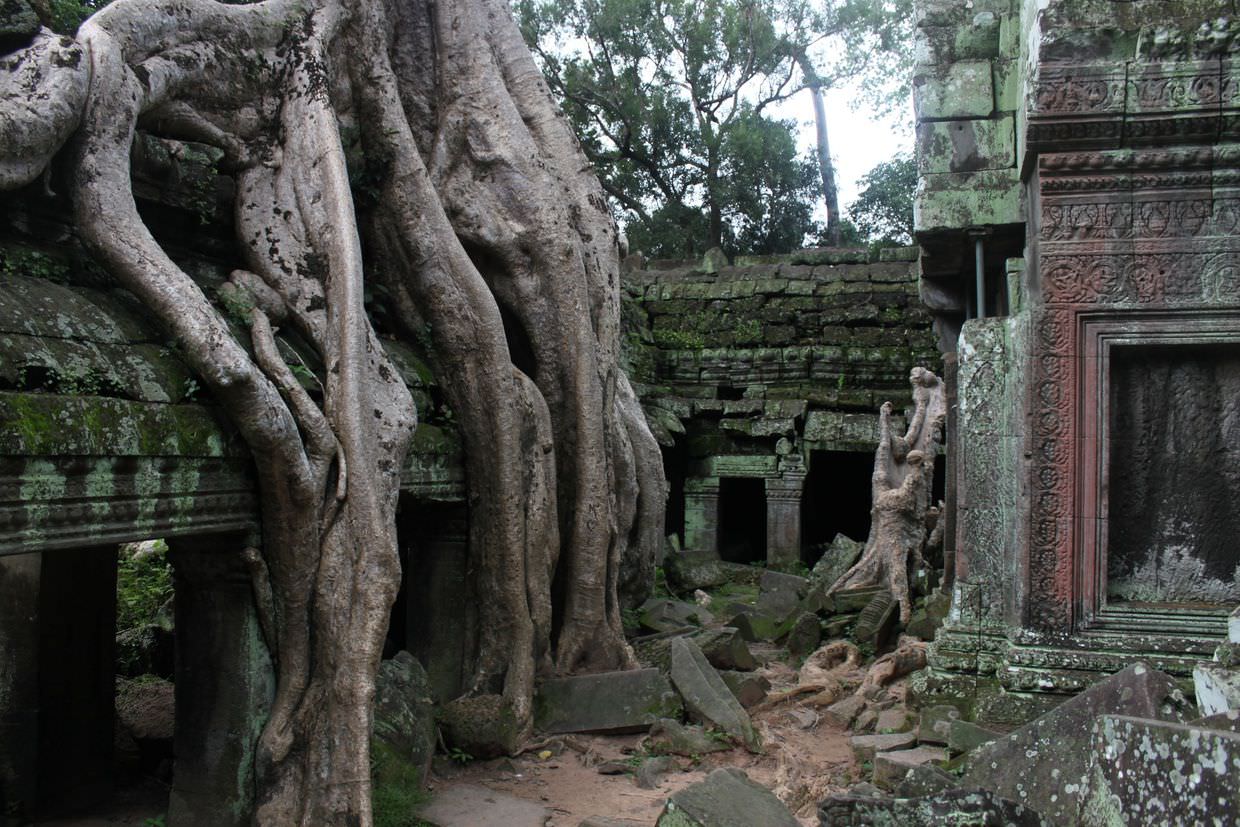
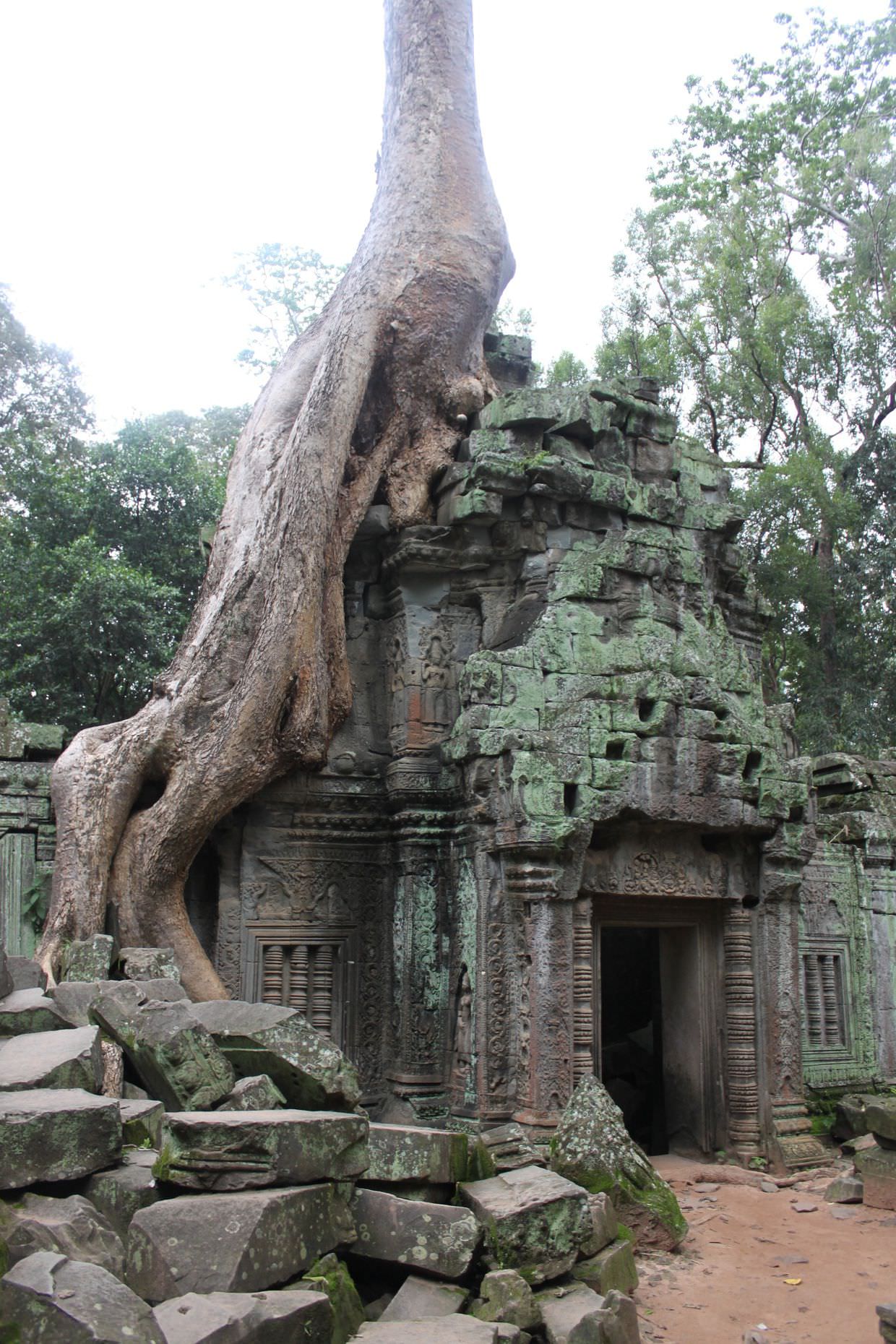
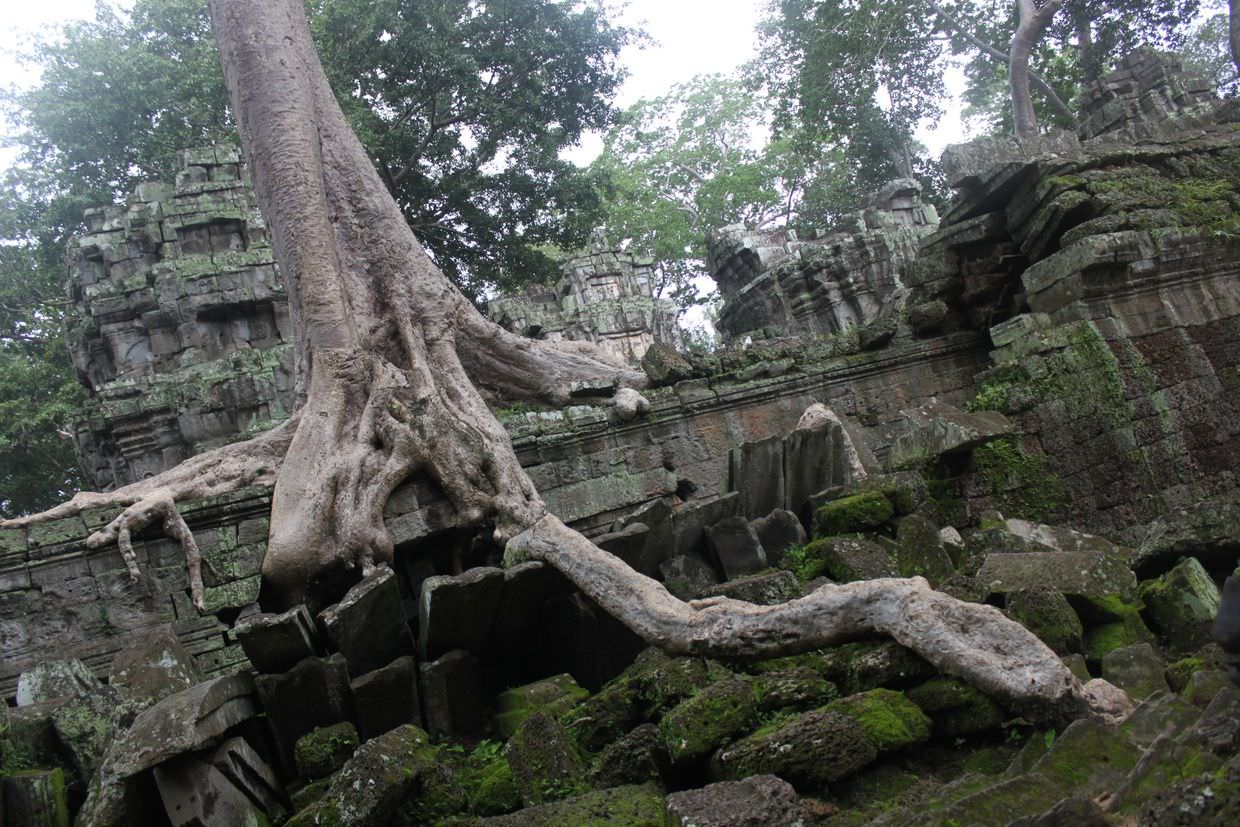
The mist cleared up, and gave way to rain. And at the temple’s traditional entrance I eventually bumped into Samantha. We continued to look around, this time posing for photos at every corner. Beneath the spidery trunk, in front of the temple, in a fallen archway, next to a colossal trunk, posing with umbrellas.
We had no guide this time, but there wasn’t any need for one. With the muddy paths and heavy rain, the temple remained quiet and serene, with the exception of an occasional flash of yellow poncho jutting from a corridor.
We spent most of our morning here, and it was my favourite of all the Angkor temples. Stunningly beautiful. I hope future renovations and tourists do not destroy this place.

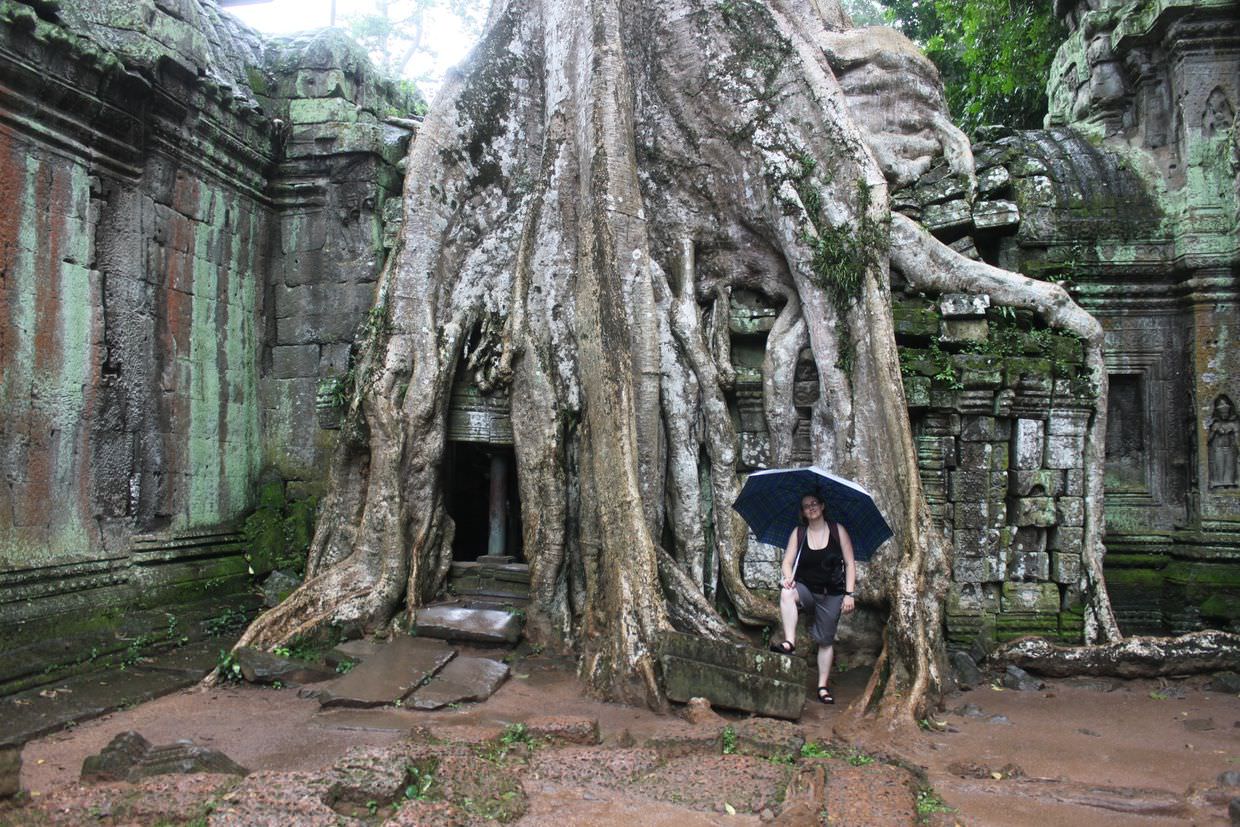
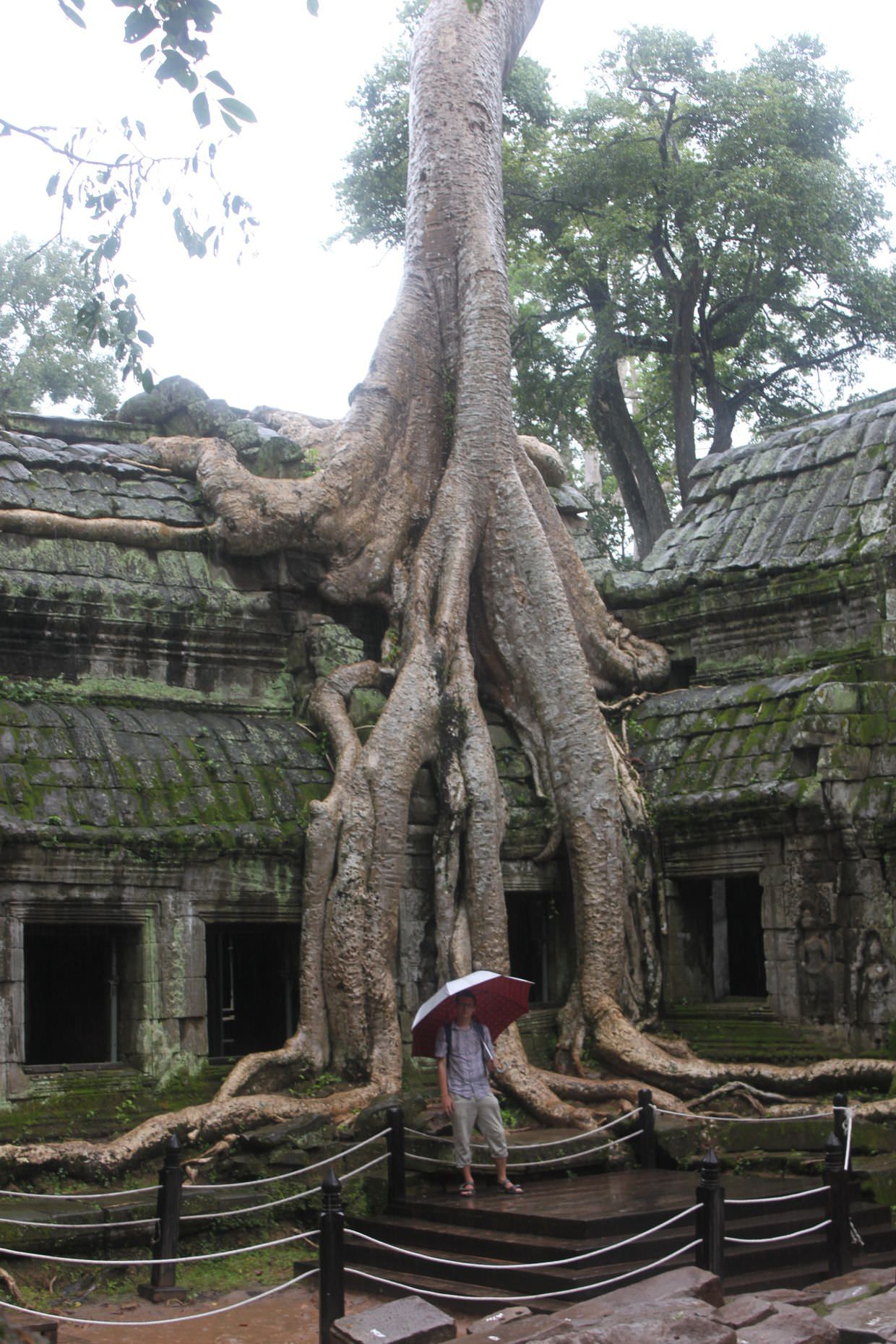
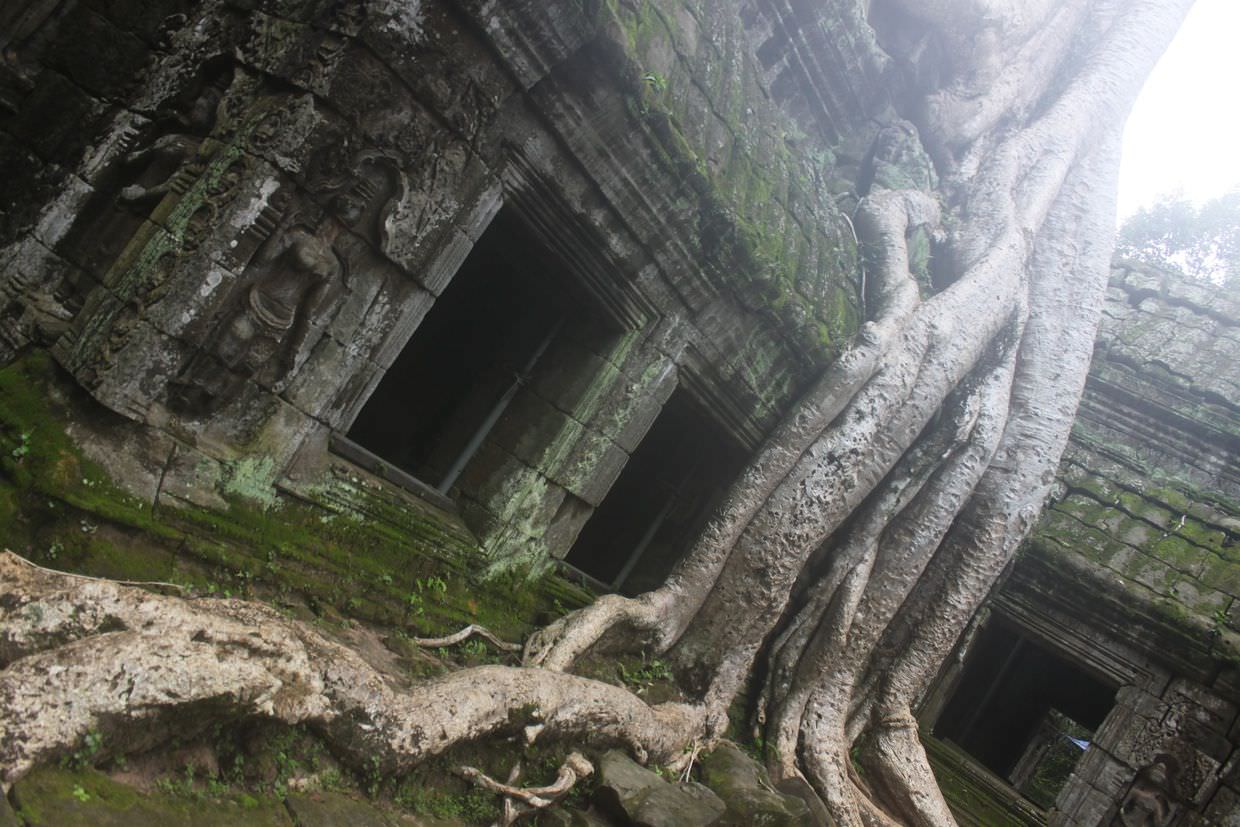
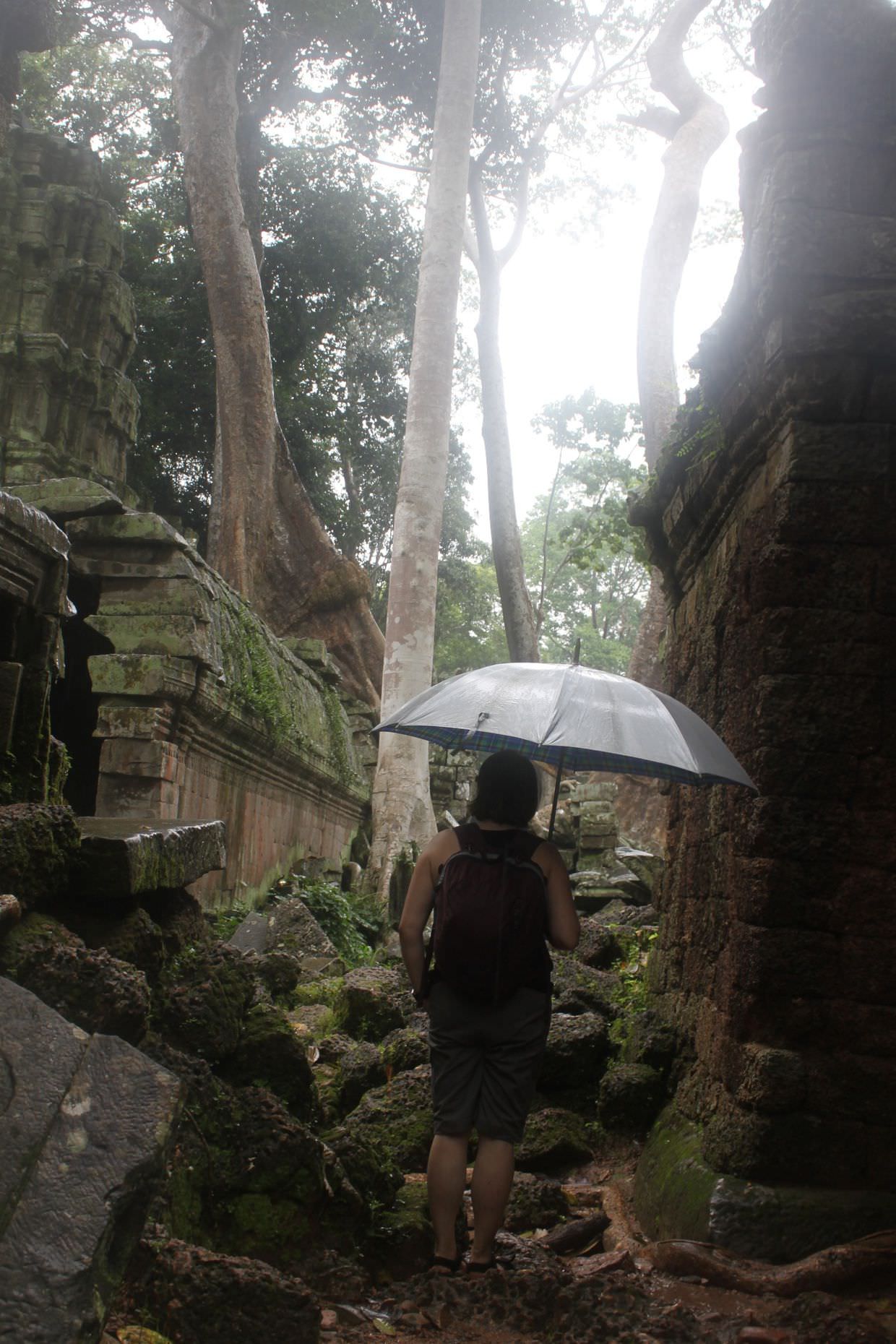
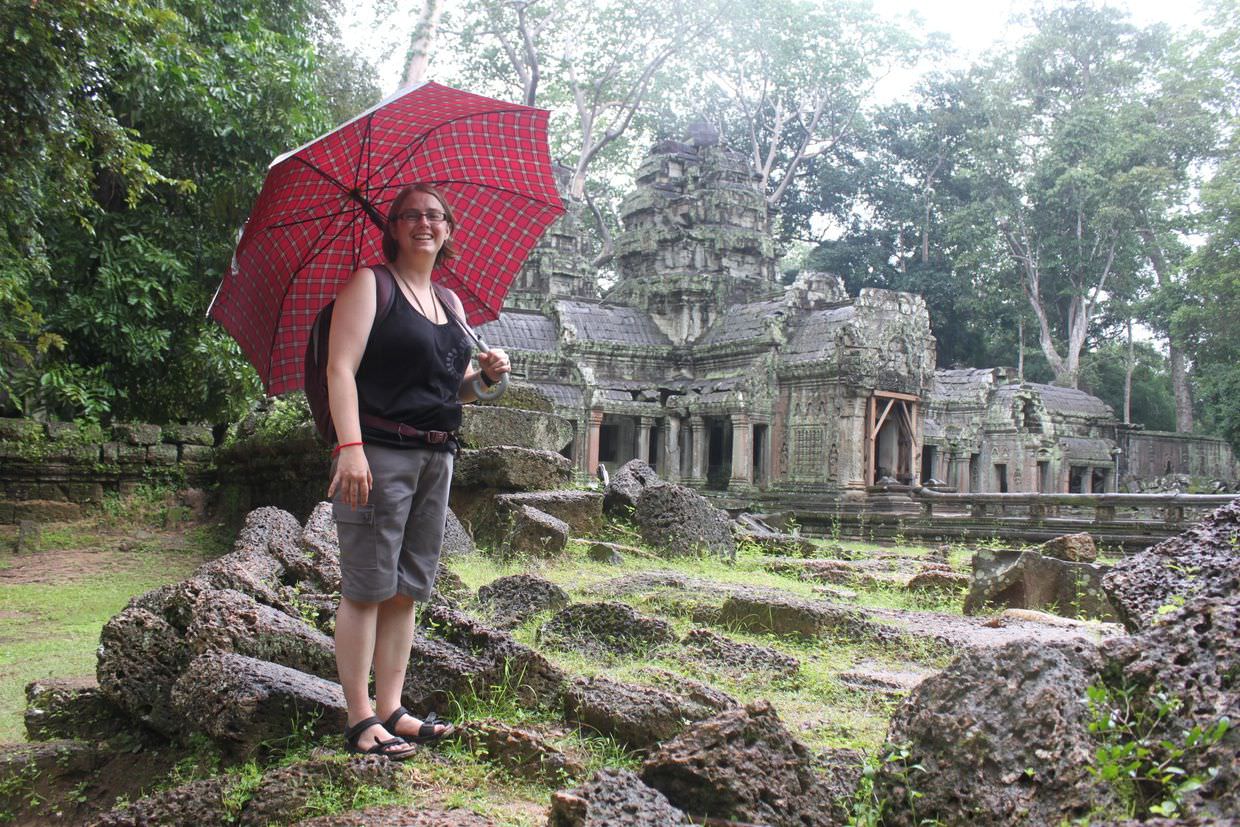
Ta Keo
By tuk-tuk we travelled to our next temple, Ta Keo. Vesna warned us to be careful on the slippery steps, and after one look Sam decided to stay at the bottom. But I climbed away, up two flights of steps. At the summit was a small Buddha statue where a lady explained the dedication process to me. Sam has been wearing a red cotton band, given as a thank you for a donation she made, the red means happiness, I am told. Coming back down was more difficult, and I watched as a Japanese group clambered down backwards, edging slowly and surely, a Cambodian selling paintings skipped down past them.
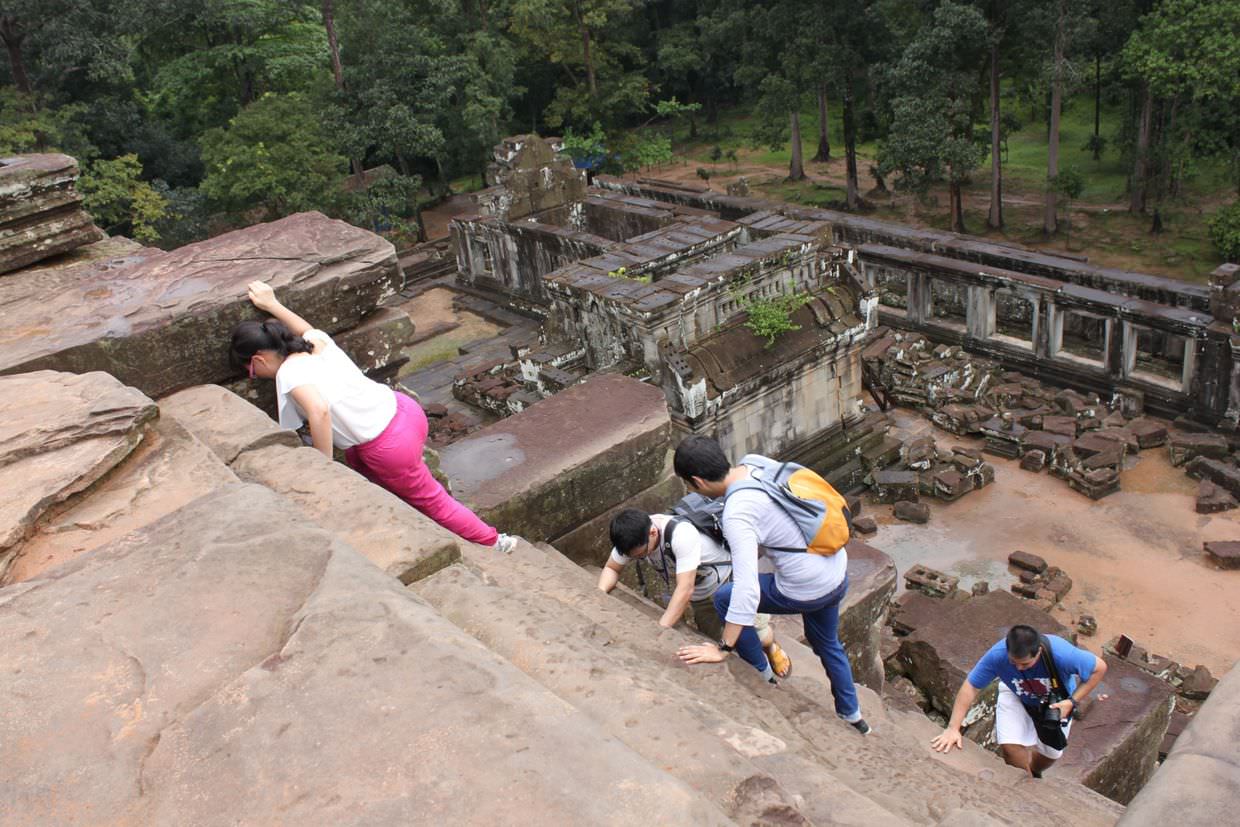
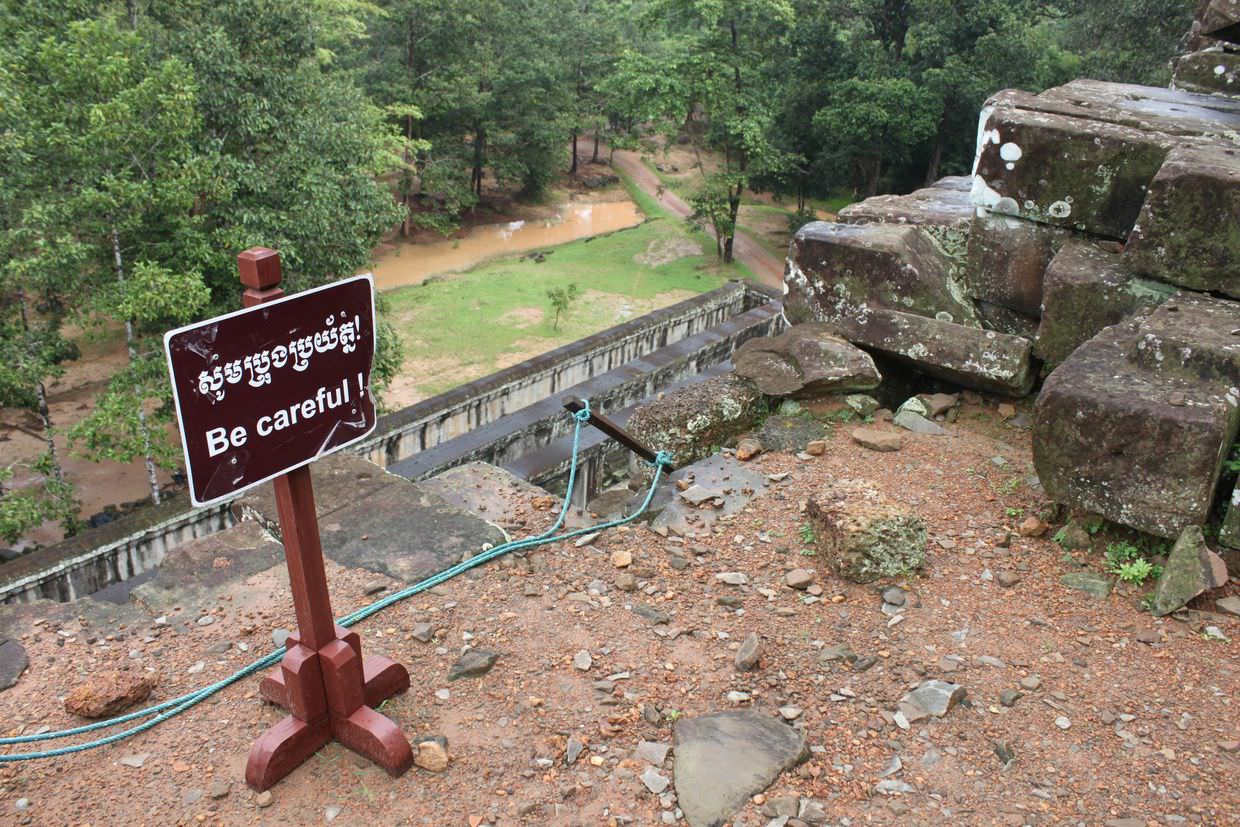

A little on from here lie Thommanon and Chau Say Tevoda. These two temples sit opposite each other, and anywhere else in the world these ancient buildings would be major tourist sites in their own right. But here, against the ruins that are the rest of Angkor, they are overlooked. “Another temple”, temple fatigue quickly sets in.
Preah Khan
Hungry, and a little tired, Vesna convinced us to visit Preah Khan (meaning Holy Sword) before lunch. It’s a flat temple to the north of the park, and one which people had lived within, up to 100,000 officials and servants. It combined the roles of a city, temple and Buddhist university, and is one of the larger temples.
There was a muddy trek to this temple, but the rain had gone, replaced with hot hot sunshine. The path was filled with butterflies, and rhododendrons, and, at last, I saw my first snake in the wild, a little brown one that I watched from a safe distance.
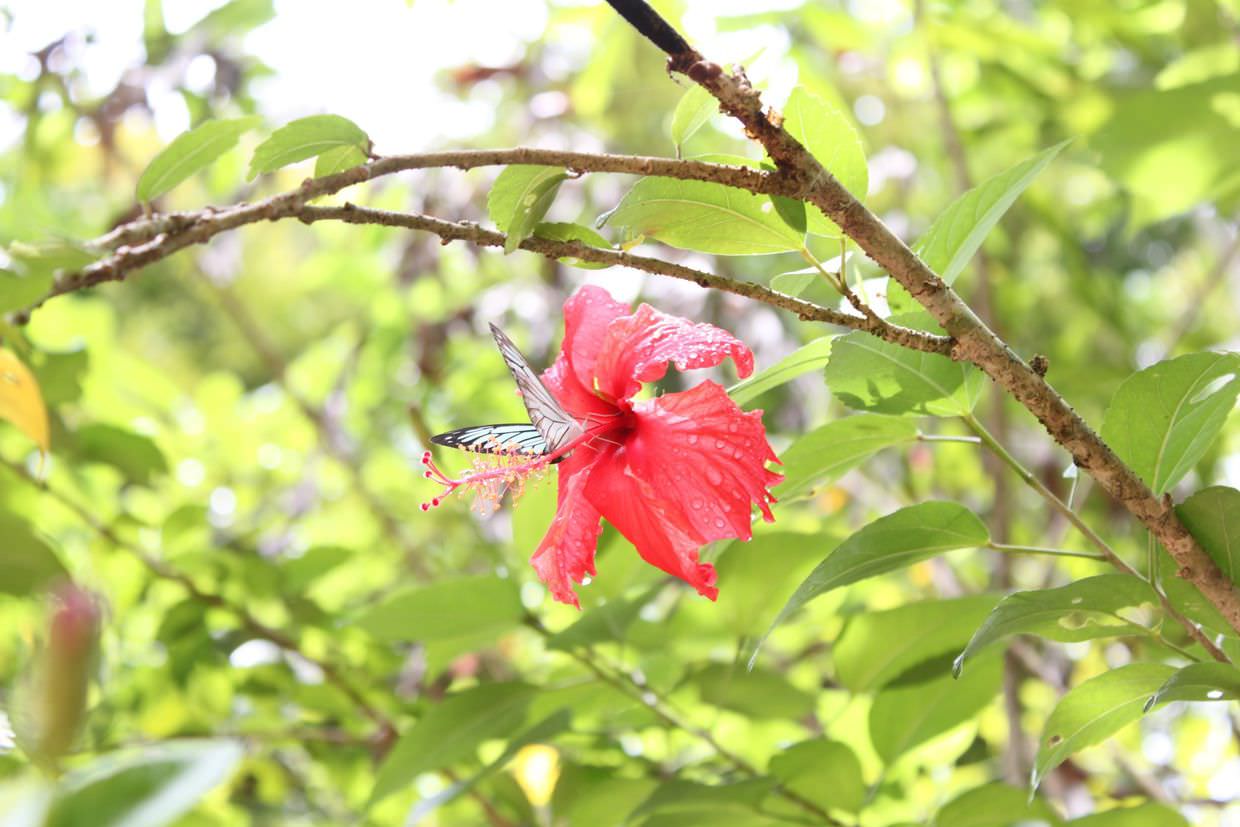
We entered the temple through a narrow alleyway, and the ruins stretched out ahead of us. Corridors every which way, we meandered around, with no particular direction. Oh dear, this route has led us to a dead end, a corridor blocked by fallen stone. The wall carvings here are magnificent. This temple, too, is succumbing to nature, trees have grown up and around the walls, the reclamation has begun.
Without a guide you discover a new group of people that attempt to sell you things, randoms that wander the temples and attempt to sell you a tour, “this is a big temple”, one pointed out to me. I smiled and kept walking. An official guide was standing amidst the ruins and Sam asked about his uniform, and the patch he wore, “you like? you want to buy?” he responded.
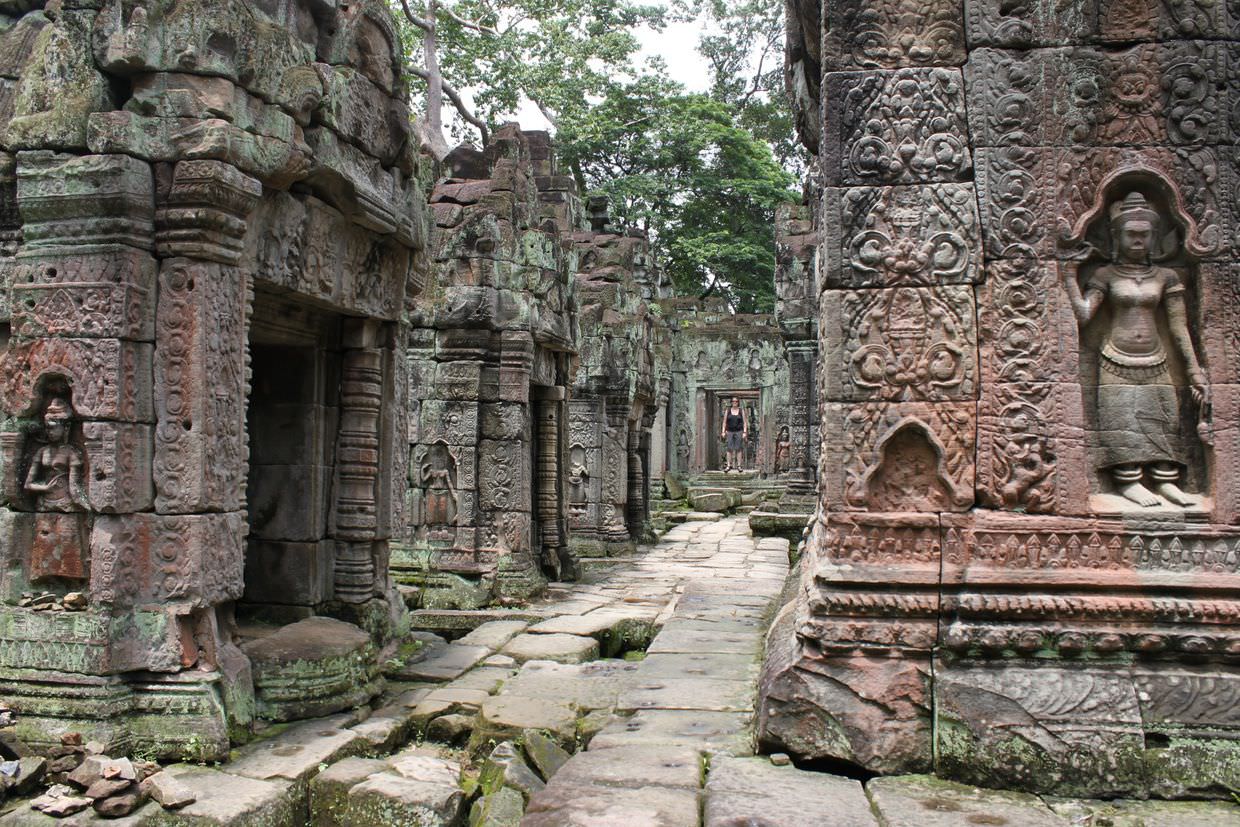

We decided on a clockwise tour of the complex, and narrowly avoided the postcard selling teenager. Once again nature caught my eye, beneath us on broken rocky path giant termites were pacing up and down, thousands of them. These things pack a nasty bite, but I stooped close to watch. On the way out we passed beneath a path-spanning web, with its creator, a giant wood spider, sitting in the middle, its body almost six inches long. Another tick in my imaginary “I spy” nature book, a giant wild spider.
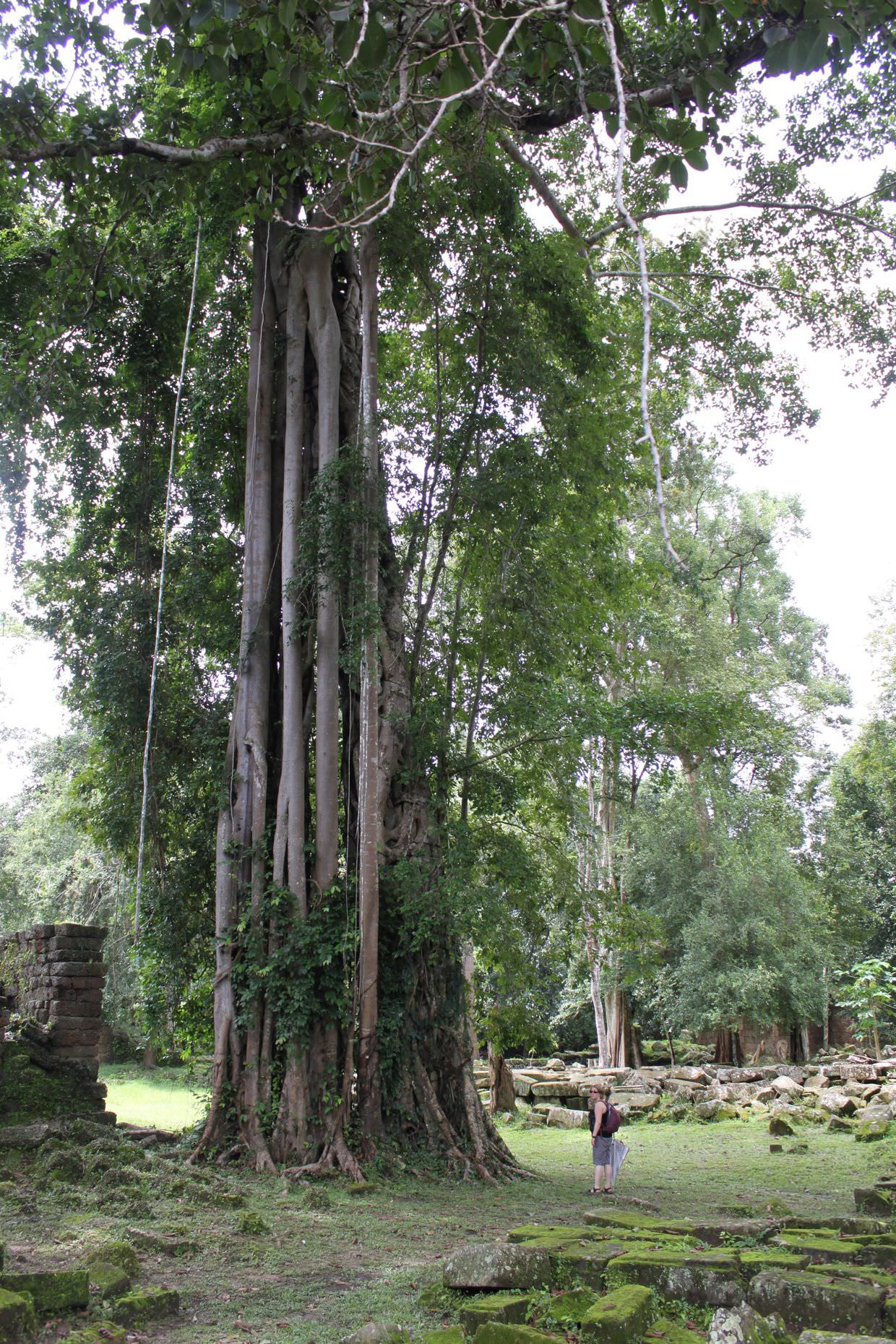
Starving, our tuk-tuk took us back to our hotel. But not before a roadside stop to grab some one dollar sticky rice in bamboo.
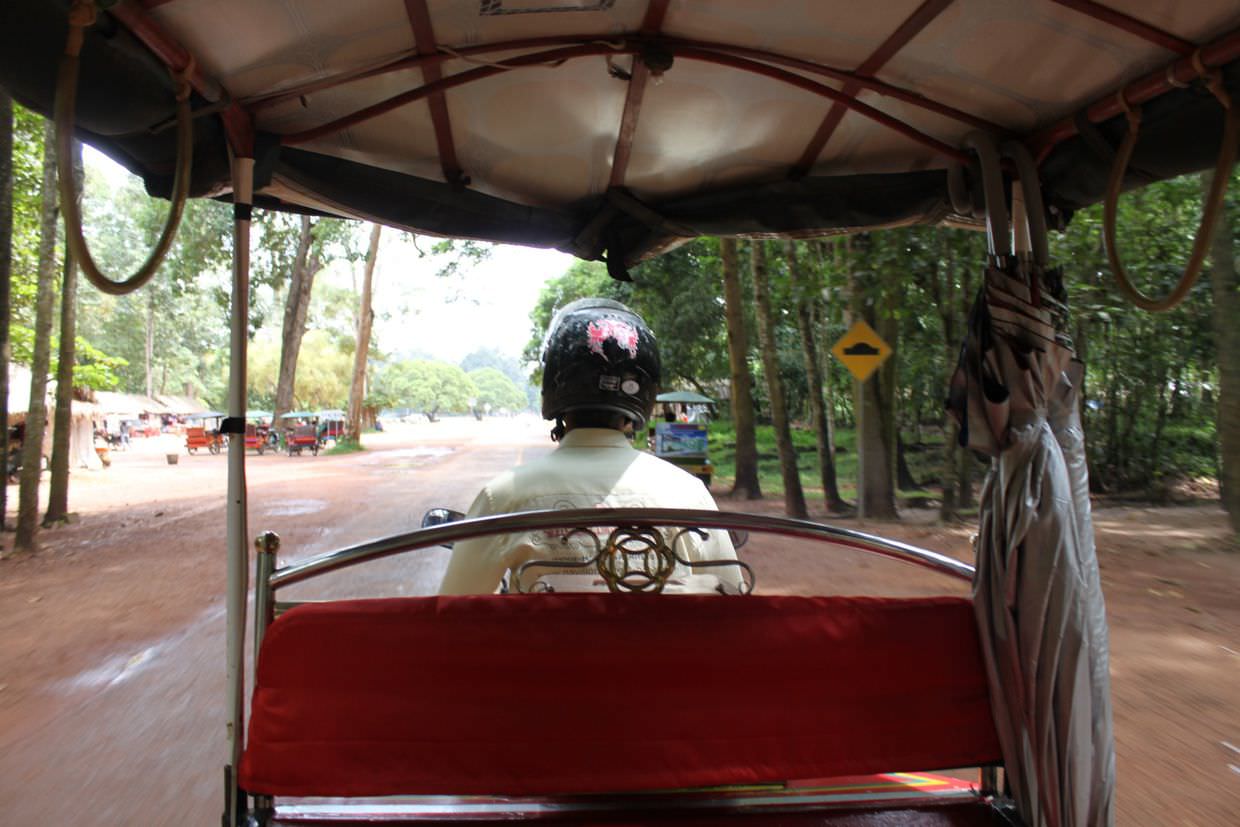
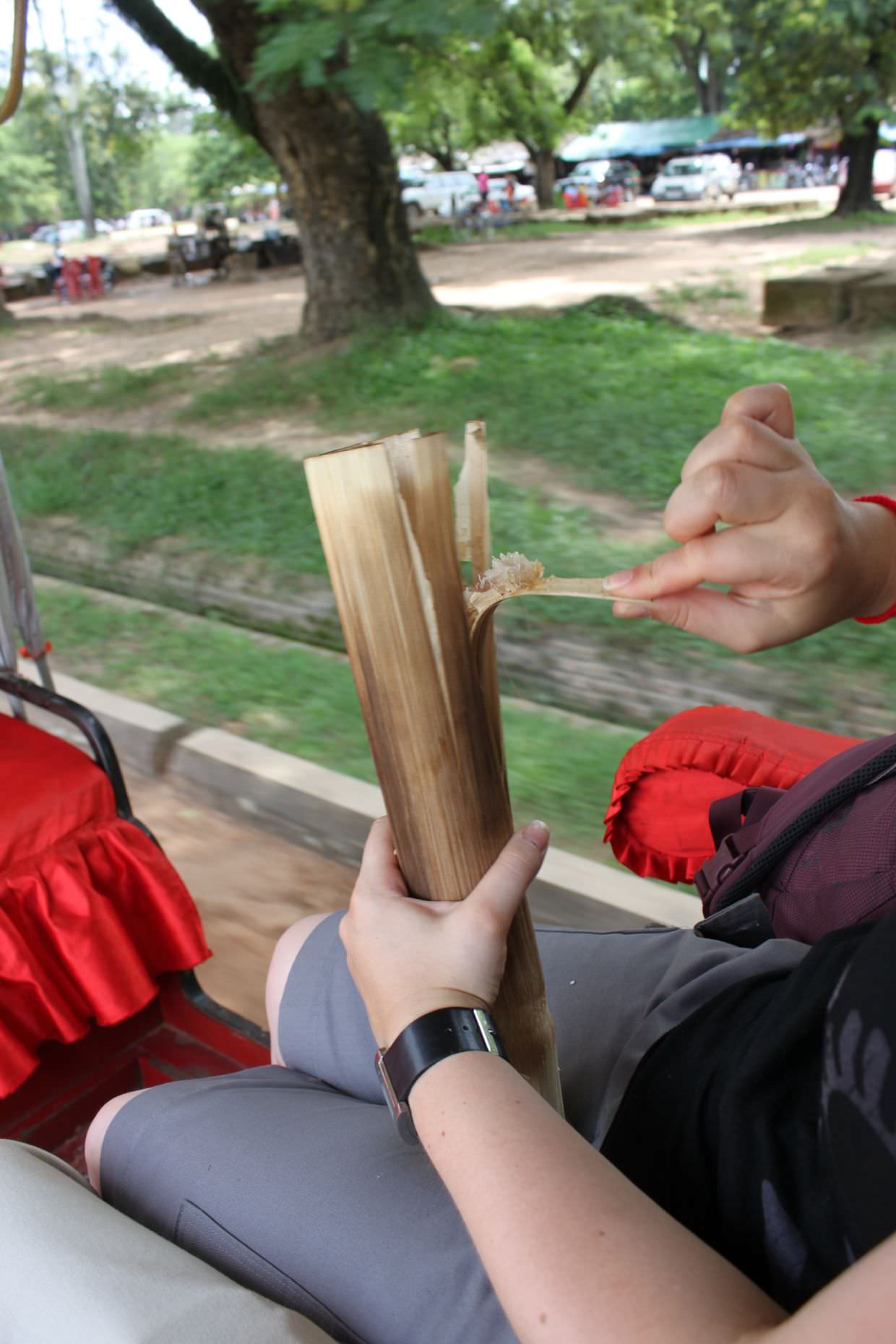
Temple fatigue
Relaxing by the hotel pool, with a pineapple smoothie, we made a speedy recovery from Angkor temple fatigue. Comforting western food helped too, guilty chips and tuna sandwich. I wrote about our travels, we slept and we showered (always showering; bug spray, dirty feet, sweat, sun lotion, dirt, chlorine; three times daily, with the jasmine-bacon scented soap).
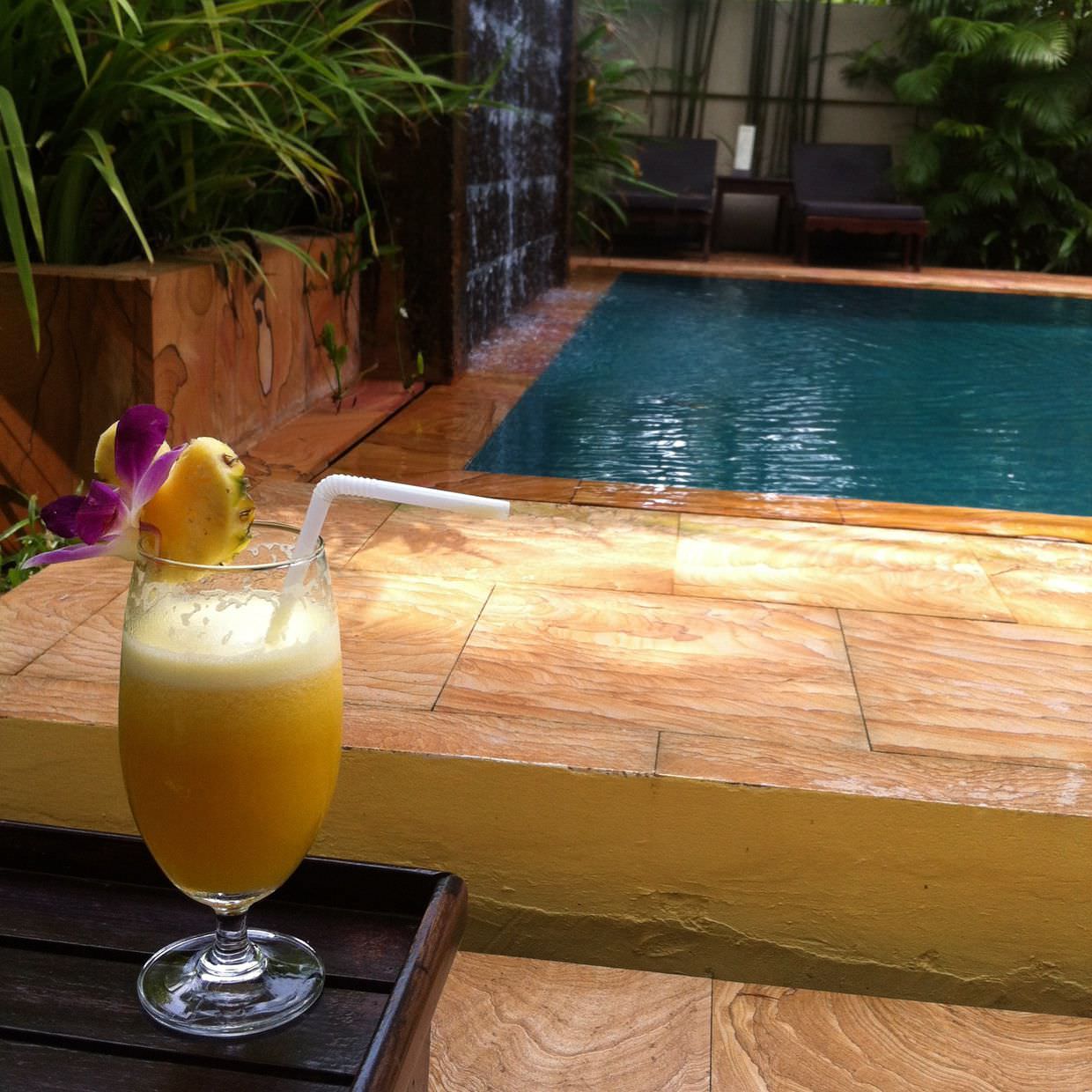
Pub street
In the evening Vesna dropped us off in Siem Reap, pub street, for dinner. But in the heavy rain it made for a miserable atmosphere. Frustrated, we slopped about in the wet, every five minutes hounded by a tuk-tuk driver. If we’re looking at menus we probably don’t want a ride somewhere else. Nowhere took our fancy, and we settled on the minimalist upstairs of the Blue Pumpkin cafe.
Tasty wontons and a huge vanilla ice-cream milkshake, and not so delightful fishy mains. Though this is a delicatessen cum cafe, and not a restaurant. Perhaps a fancy Tonle Sap fish meal here wasn’t the best of ideas in the first place. Downstairs we bought chocolate cake and brownie for dessert, and headed home.
Another night at Pavillon D’orient, and another bed time story beneath the mosquito net.